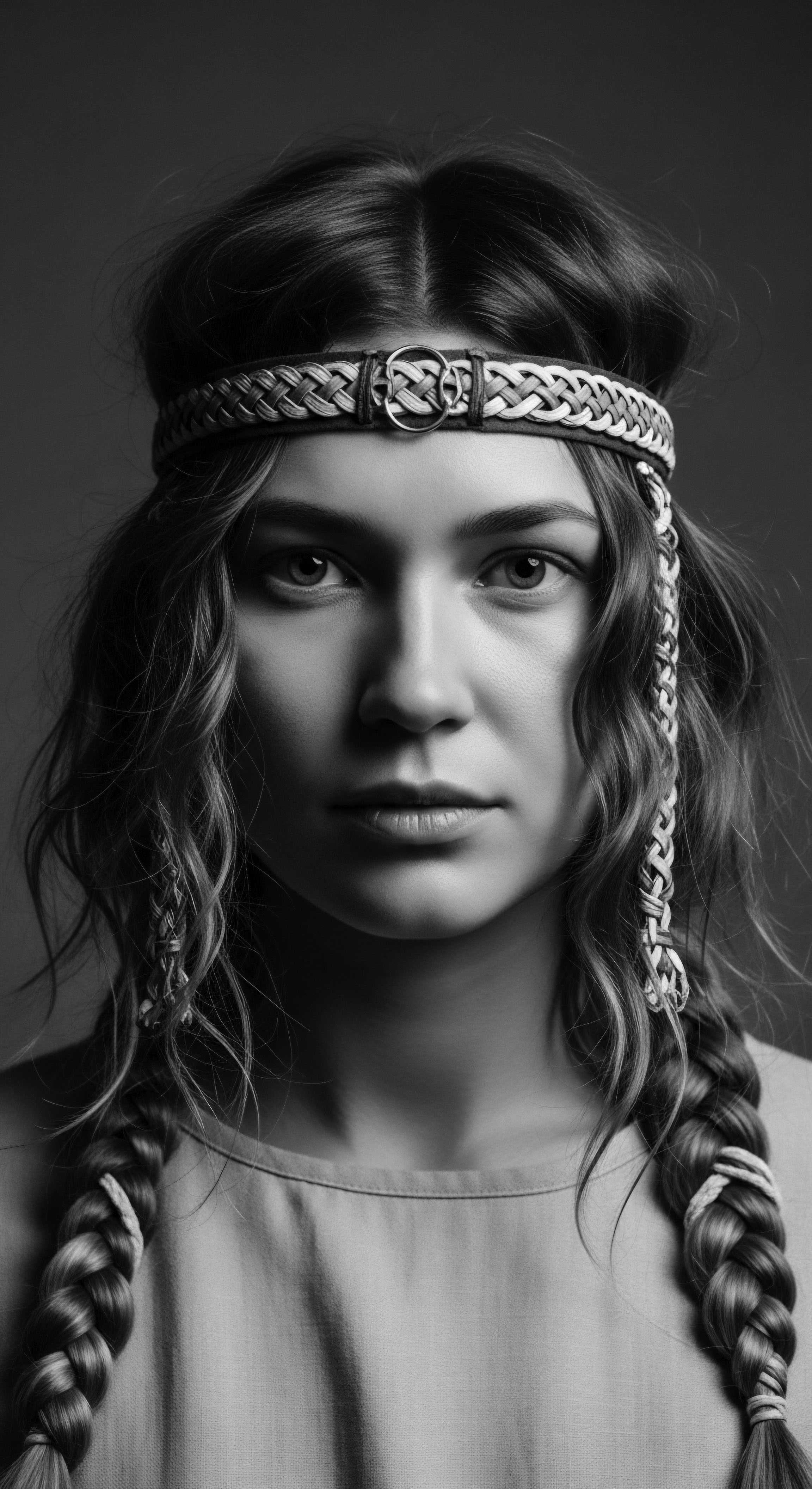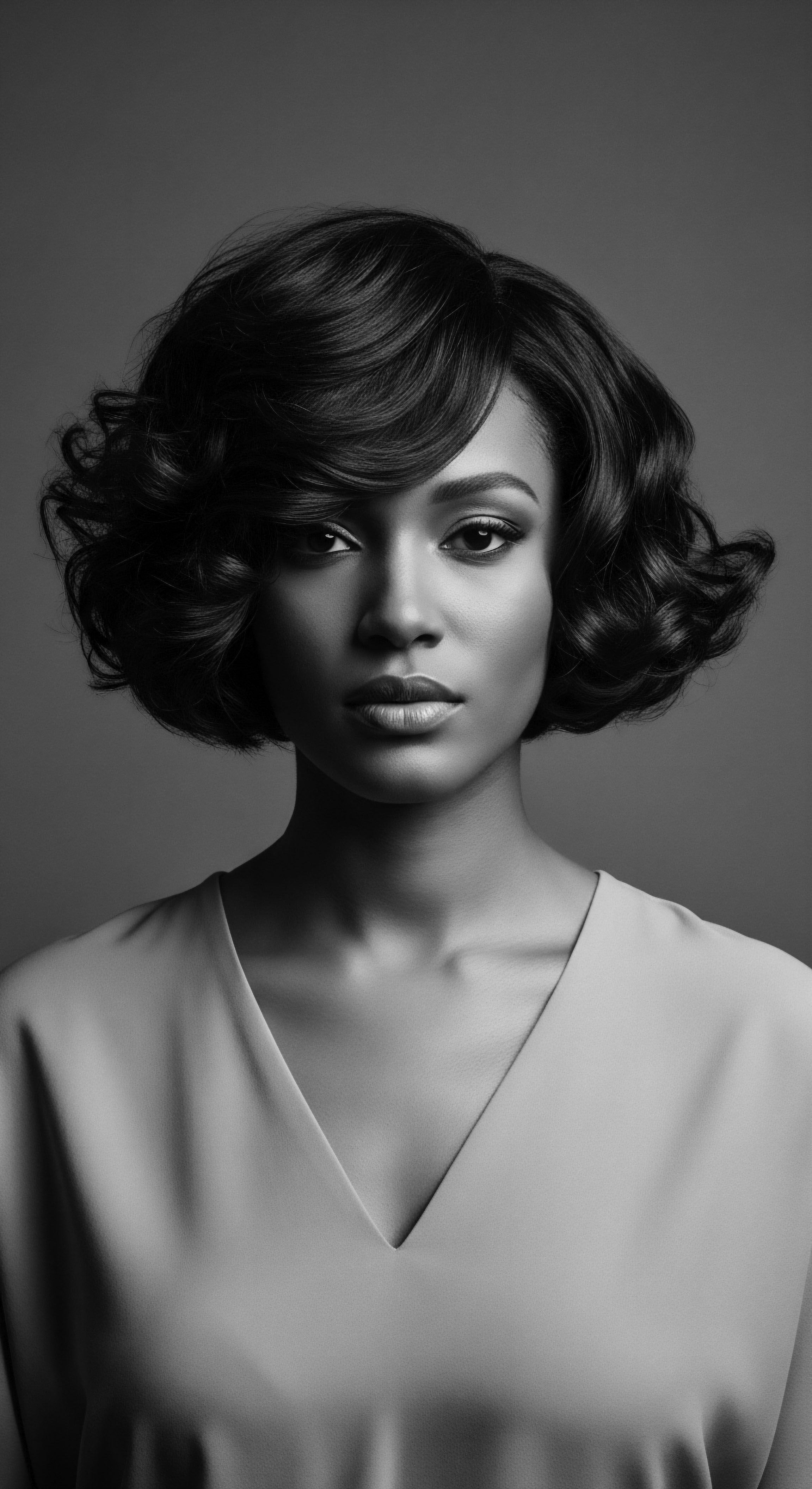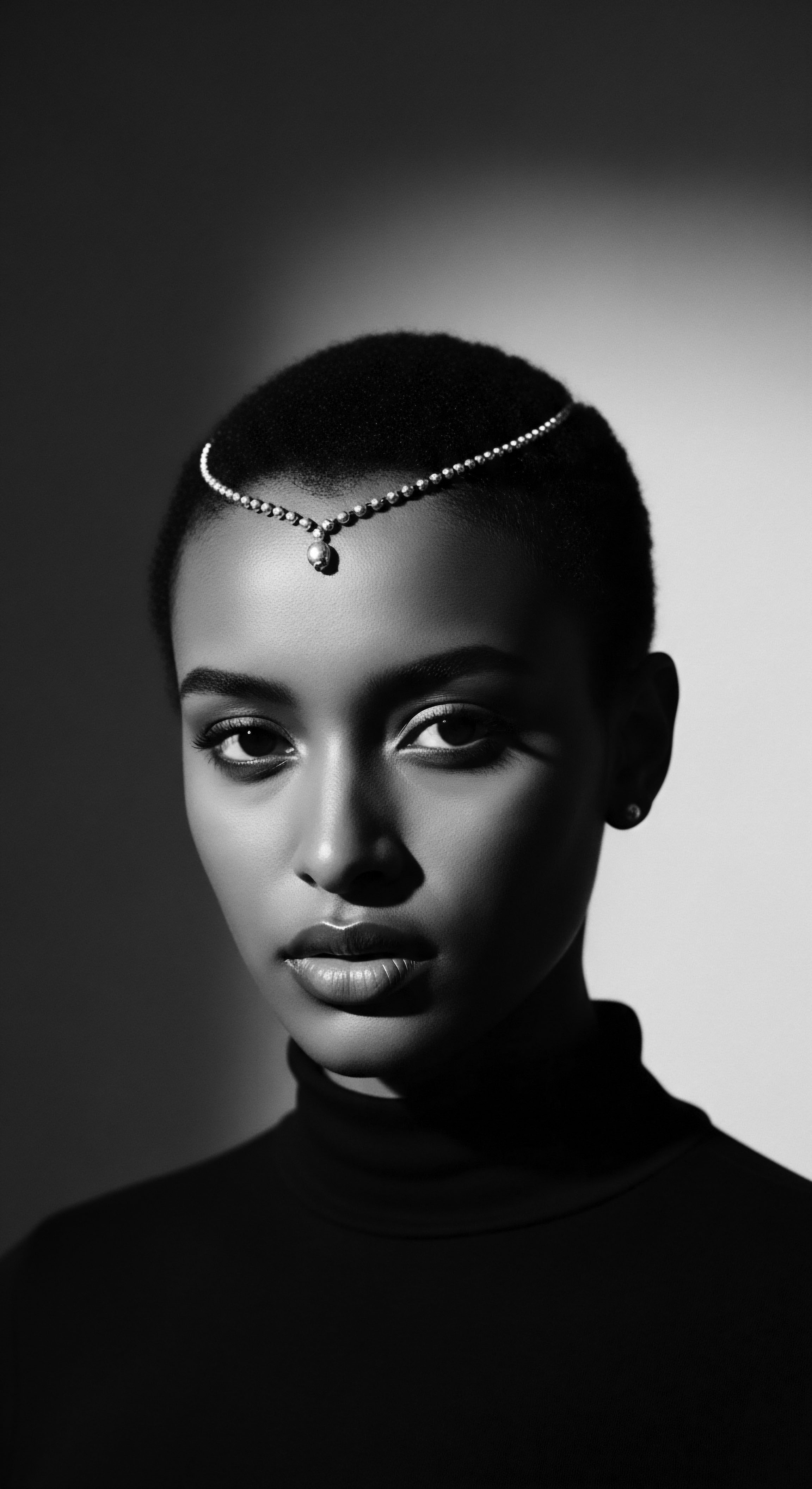
Fundamentals
The concept of the Kalunga Line, within the profound wisdom of Roothea’s ‘living library,’ represents more than a mere boundary; it is a profound spiritual and existential demarcation, particularly resonant within Kongo cosmology. At its most straightforward, this line delineates the seen world from the unseen, the realm of the living from the ancestral plane. It serves as a symbolic horizon, a liminal space where earthly existence converges with the spiritual dimension. The designation “Kalunga” itself, stemming from the Kongo language, carries the significance of “God” or “that which cannot be measured,” suggesting an expansive, immeasurable force that underpins existence.
For those new to this profound concept, understanding the Kalunga Line begins with recognizing its fundamental role as a bridge, not a chasm. It is the very pathway across which life’s energies move, from birth to ancestral return, and back again. This foundational idea permeates various aspects of traditional African thought, particularly within the textured hair heritage, where hair itself is often regarded as a conduit for spiritual energy and a tangible connection to lineage.
The significance of this line is not static; it is a dynamic concept, continuously reinterpreted and reaffirmed through rituals, stories, and the lived experiences of communities. It offers an explanation for the cyclical nature of existence, underscoring the deep interdependence between the physical and spiritual realms.
The Kalunga Line is a foundational concept in Kongo cosmology, representing the symbolic boundary between the living world and the spiritual realm, a continuous cycle of existence.

Echoes from the Source ❉ Hair as a Spiritual Conduit
Hair, in numerous African societies, is not merely a biological extension but a sacred part of the body, believed to be a direct point of entry for spiritual energy. This belief transforms hair into a communal asset, linking individuals to their ancestors and the spiritual world. The Kalunga Line, therefore, becomes intimately connected to the very strands that crown our heads.
The care and styling of textured hair, from ancient Egyptian elaborate wigs to West African braids, were never solely about aesthetics. These practices were deeply intertwined with spiritual beliefs, social status, and a profound reverence for heritage.
- Ancient Egypt ❉ Hairstyles, including intricate braids and wigs, were symbols of hierarchy and divinity, often adorned with precious materials to signify wealth and religious devotion.
- Yoruba Cosmology ❉ Hair is considered sacred, a medium for spiritual energy connecting individuals to their ancestors and deities.
- Maasai People ❉ Distinctive hairstyles, including shaved and semi-shaved styles along with braids, symbolized strength, bravery, and marked rites of passage, affirming spiritual connection.
The act of braiding, for instance, transcended mere beautification; it was a communal event, a sacred space where wisdom was imparted, stories shared, and traditions passed down through generations. This collective act of care for hair, deeply connected to the Kalunga Line, solidified community bonds and cultural preservation, reflecting a continuous thread of ancestral knowledge.

Intermediate
The Kalunga Line, in a more nuanced understanding, functions as a dynamic spiritual axis within the Kongo cosmogram, known as the Dikenga. This cosmogram, a foundational element of Kongo society, visually represents the cyclical movement of the sun and, by extension, the journey of life, death, and rebirth. The Kalunga Line forms the horizontal plane of this cosmogram, separating the visible world of the living (Nseke) from the invisible realm of the ancestors and spirits (Mpemba). It is not a static barrier, but a permeable membrane, constantly traversed by spiritual energies and human experience.
The meaning of the Kalunga Line extends beyond a simple division; it signifies the constant interplay between creation and dissolution, memory and emergence. The term “Kalunga” itself, while meaning “God” or “that which cannot be measured,” also refers to the sea in Chokwe mythology, embodying a vast, omnipresent force and the boundary between life and death. This fluid, expansive quality of the Kalunga Line reflects the continuous flow of ancestral wisdom and life force into the present, directly influencing the vitality and expression of textured hair.

The Tender Thread ❉ Hair as a Living Archive of Ancestry
The connection between the Kalunga Line and textured hair heritage becomes particularly vivid when we consider hair as a living archive. Each coil, every twist, and every strand carries the indelible imprint of generations, embodying ancestral practices and stories. Hair braiding, for instance, has historically served as a complex visual language, conveying social status, age, marital status, tribal affiliation, and even spiritual beliefs. This rich cultural communication is a direct manifestation of the principles embedded within the Kalunga Line, where the past informs the present and guides the future.
For enslaved Africans during the transatlantic slave trade, braiding traditions were not simply aesthetic choices; they became powerful acts of resistance, resilience, and cultural preservation. In the Americas and the Caribbean, these traditions persisted, evolving into styles like cornrows, which are said to have been used to create maps for escape or to hide rice seeds, ensuring survival. This historical example profoundly illuminates the Kalunga Line’s connection to Black hair experiences. The ingenuity and cultural continuity demonstrated through these practices underscore how hair became a medium for navigating the precarious line between survival and spiritual sustenance, echoing the very essence of the Kalunga Line’s duality.
The significance of this is not merely anecdotal. A qualitative research project exploring Black women’s experiences with natural hair in the diaspora highlights that hair functions as a powerful identity marker, imbued with messages in each strand. Participants in a study recalled hair-related childhood experiences with their mothers and grandmothers, with a common message from elders emphasizing, “your hair is your crown and glory.” (Chapman, as cited in Grant, 2014, p. 15) This deeply personal connection, passed down through matriarchal lines, speaks to the living heritage embedded within textured hair, directly mirroring the continuous flow of ancestral energy across the Kalunga Line.
| Traditional Practice Communal Braiding Sessions |
| Heritage Connection Spaces for sharing oral histories, wisdom, and strengthening community bonds, embodying the continuous flow of ancestral knowledge across the Kalunga Line. |
| Traditional Practice Adornment with Beads/Shells |
| Heritage Connection Symbols of wealth, status, spirituality, and ancestral connection, acting as tangible links to the spiritual realm that the Kalunga Line represents. |
| Traditional Practice Hair as a Rite of Passage |
| Heritage Connection Marking transitions in life stages (e.g. from girlhood to womanhood), symbolizing a new beginning and reaffirmation of spiritual connection, echoing the cyclical nature of the Kalunga Line. |
| Traditional Practice These practices demonstrate how the physical act of hair care was deeply intertwined with spiritual beliefs and cultural identity, reflecting the dynamic meaning of the Kalunga Line. |
The notion of “good hair” within the diaspora, often associated with textures closer to European hair, created a dichotomy that marginalized natural Black hair. However, the re-emergence of the Natural Hair Movement challenges these norms, asserting that beauty is deeply rooted in culture and history, a declaration that affirms the enduring power of ancestral connections across the Kalunga Line.

Academic
The Kalunga Line, from an academic perspective, represents a profound ontological and epistemological construct central to Kongo cosmology, serving as the definitive boundary and connective tissue between the physical realm (Nseke) and the spiritual or ancestral realm (Mpemba). This delineation is not merely a conceptual separation but a dynamic, permeable threshold through which life forces, ancestral spirits, and existential knowledge flow. The term “Kalunga” itself, transcending a simple designation, functions as an epithet for Nzambi Mpungu (God) and signifies “that which cannot be measured” or “the line of God,” underscoring its immeasurable and divine nature. It is a cosmological principle that governs the cyclical nature of existence, where birth, life, death, and ancestral return are understood as continuous movements across this sacred divide.
This understanding is deeply embedded within the Dikenga, the Kongo cosmogram, which visually articulates the sun’s journey through four phases—sunrise (musoni, conception), zenith (kala, birth), sunset (tukula, maturity), and midnight (luvemba, death/ancestral wisdom)—each phase directly intersecting with or traversing the Kalunga Line. The Kalunga Line, therefore, is not a static point but a perpetual zone of transformation and spiritual transit. Anthropological studies of Kongo-derived traditions, such as Palo in Cuba, further reveal how the apprehension of Kalunga is taught as a visceral, unverifiable experience at the limits of sensation, manifesting as chills or a fluttering in the chest, signifying the proximity of the ancestral sea of the dead. (Ochoa, 2007, 2010, as cited in Obar, 2019) This highlights the lived, embodied meaning of the Kalunga Line, extending beyond abstract philosophical thought into the very sensory experience of individuals within these cultural frameworks.

The Unbound Helix ❉ Hair as a Repository of Intergenerational Knowledge
The academic examination of the Kalunga Line’s profound connection to textured hair heritage necessitates a deep inquiry into hair as a repository of intergenerational knowledge and a site of cultural inscription. Hair, particularly in Black and mixed-race communities, has consistently functioned as a potent symbol of identity, social status, spiritual connection, and resistance. The very act of caring for textured hair, from ancient braiding techniques to modern protective styles, embodies a continuous dialogue with ancestral wisdom, directly reflecting the permeability and dynamism of the Kalunga Line.
Historically, African societies meticulously employed hairstyles to communicate intricate details about an individual’s life. Braids, for instance, could signify age, marital status, tribal affiliation, and even spiritual beliefs. This complex semiotic system embedded within hair practices illustrates a sophisticated understanding of the body as a canvas for cultural expression, a direct extension of the collective consciousness that navigates the Kalunga Line. The Mangbetu people of northeastern Congo, renowned for their distinctive and elaborate hairstyles, provide a compelling case study.
Their traditional practice of Lipombo, involving the elongation of the skull from infancy, was considered a mark of beauty and prestige. The hair was then intricately styled to accentuate this elongated shape, using natural materials, feathers, and beads, transforming each hairstyle into a unique piece of art. This practice, while physically transformative, also served as a powerful statement of cultural values and identity, demonstrating a profound connection to ancestral ideals of beauty and status. The physical alteration of the skull, combined with the elaborate hair styling, acted as a permanent marker of cultural belonging and a visual affirmation of their heritage, a tangible manifestation of the Kalunga Line’s influence on the living.
The transatlantic slave trade, a cataclysmic rupture, attempted to sever these ancestral connections, yet the resilience of textured hair practices persisted. Enslaved Africans carried their braiding traditions across oceans, transforming them into tools of survival and resistance. Cornrows, for example, were not merely styles but covert maps for escape or vessels for hiding seeds, symbolizing an unbroken link to ancestral lands and a determination to traverse the line between bondage and freedom.
This continuity, despite immense oppression, exemplifies the enduring power of the Kalunga Line—the spiritual and cultural heritage—to transcend physical barriers and sustain identity. The persistence of these practices speaks to a profound cultural memory, where the body, particularly hair, becomes a living testament to ancestral fortitude.
The Kalunga Line, in its academic interpretation, illuminates how textured hair serves as a profound cultural artifact, encoding historical narratives, ancestral wisdom, and the enduring spirit of Black and mixed-race communities.
The contemporary Natural Hair Movement, emerging from the legacy of the Black Power Movement, represents a conscious reclamation of these ancestral connections. It challenges Eurocentric beauty standards that historically devalued textured hair, asserting the inherent beauty and cultural significance of natural curls, coils, and waves. This movement is not merely a trend; it is a profound socio-cultural phenomenon that re-establishes the intimate relationship between self-perception, collective identity, and ancestral heritage, directly reflecting the Kalunga Line’s influence on contemporary lived experience. The act of choosing to wear natural hair becomes a deliberate act of honoring one’s lineage, a conscious traversal of the Kalunga Line to draw strength and affirmation from the ancestral realm.
The political dimension of Black hair, historically perceived as “unacceptable” in its natural state, transformed into a symbol of power and recognition during the Civil Rights era. This shift demonstrates the dynamic interplay between cultural expression, societal norms, and the profound impact of ancestral memory, which continues to shape contemporary Black experiences. The hair, in this context, becomes a visible declaration of self-definition, a testament to the ongoing journey across the Kalunga Line.
- Cultural Semiotics ❉ Hair acts as a complex system of signs, conveying social, spiritual, and historical information within African and diasporic communities.
- Embodied Memory ❉ The practices of textured hair care serve as embodied memory, transmitting ancestral knowledge and cultural resilience across generations.
- Reclamation of Identity ❉ The Natural Hair Movement signifies a conscious re-engagement with ancestral aesthetics and a rejection of imposed beauty standards, reaffirming the inherent value of Black and mixed-race hair.
The Kalunga Line, therefore, provides a critical framework for understanding the profound significance of textured hair. It explains how hair is not just a biological feature but a dynamic cultural entity, perpetually connected to ancestral wisdom, historical struggles, and the ongoing quest for self-affirmation within the diaspora. The care and styling of textured hair become rituals that honor this sacred connection, ensuring that the echoes from the source continue to resonate through the living strands, perpetually reaffirming the unbound helix of heritage.

Reflection on the Heritage of Kalunga Line
The Kalunga Line, as explored through the lens of Roothea’s ‘living library,’ stands as a testament to the enduring spirit of textured hair heritage. It is more than a conceptual divide; it is the very breath that animates the stories held within each coil, each strand, each carefully crafted style. This profound understanding of the Kalunga Line invites us to perceive our hair not merely as a biological attribute, but as a vibrant, living connection to the ancestral realm, a continuous conversation between past and present. It is in the rhythmic braiding, the tender detangling, the thoughtful oiling, that we find ourselves walking this sacred line, honoring the wisdom passed down through generations.
The resilience of textured hair, its ability to thrive despite historical attempts at erasure, is a powerful reflection of the Kalunga Line’s inherent strength—a reminder that what cannot be measured, what is truly divine, cannot be broken. Our textured crowns are not just adornments; they are maps of memory, conduits of spirit, and declarations of an unbroken lineage, forever dancing on the Kalunga Line, echoing the Soul of a Strand.

References
- Byrd, A. D. & Tharps, L. L. (2001). Hair Story ❉ Untangling the Roots of Black Hair in America. St. Martin’s Press.
- Grant, A. (2014). Examining the Experiences of Black Women with Natural Hair. CUNY Academic Works.
- Fu-Kiau, K. K. B. (1991). African Cosmology of the Bântu-Kôngo ❉ Principles of Life & Living. Black Classic Press.
- Mbiti, J. S. (1969). African Religions and Philosophy. Heinemann.
- Obar, J. (2019). Versions of the Dead ❉ Kalunga, Cuban-Kongo Materiality, and Ethnography. ResearchGate.
- Patton, T. O. (2006). Pushing Our Own Buttons ❉ The Cultural Politics of Hair Among Women of African Descent in the Diaspora. Transforming Anthropology.
- Thompson, R. F. (1983). Flash of the Spirit ❉ African and Afro-American Art and Philosophy. Vintage Books.
- Walker, R. (2001). African Roots, American Cultures ❉ Africa in the Creation of the Americas. Rowman & Littlefield Publishers.
